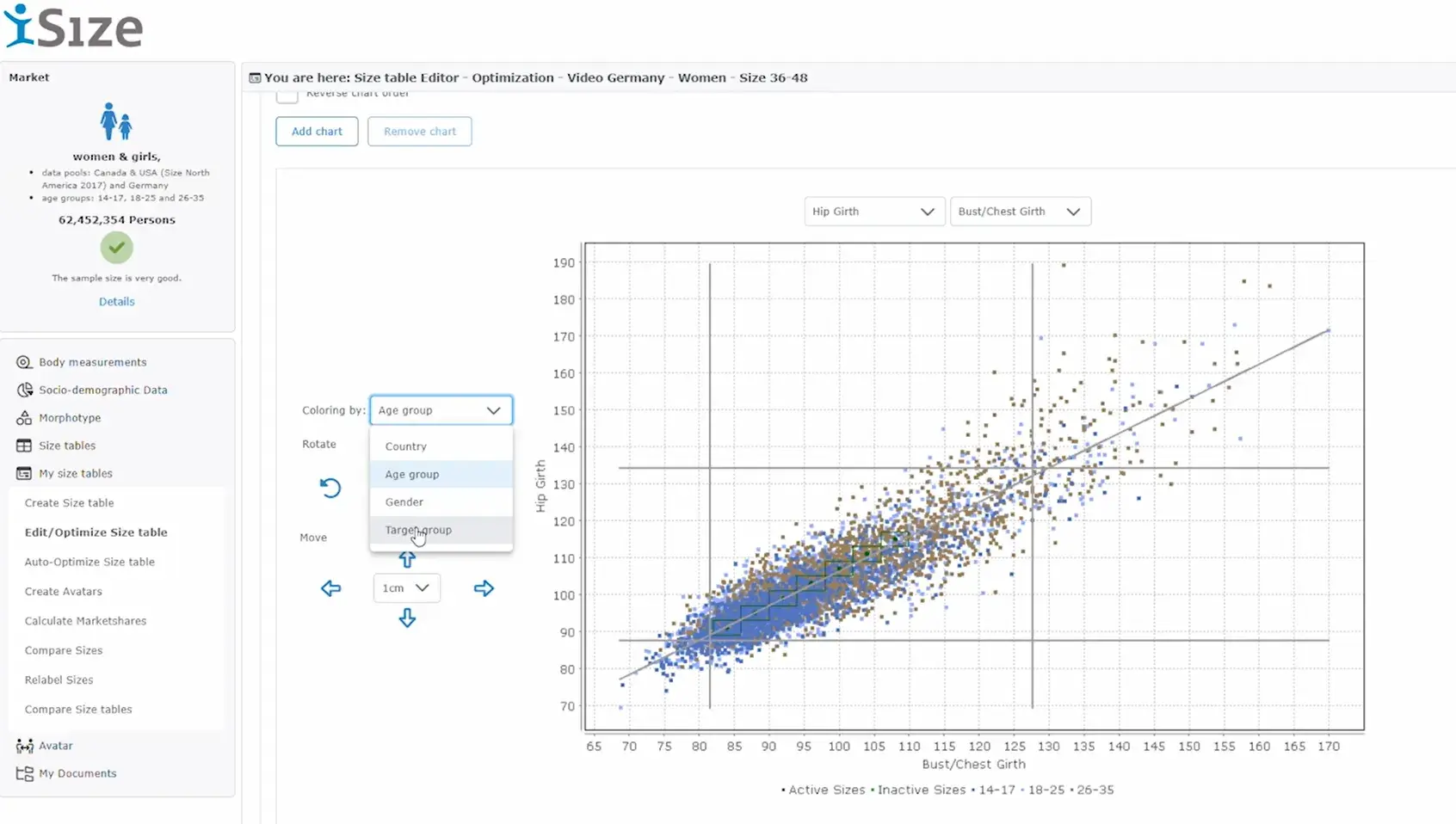Return rates and customer complaints over-sizing are increasing.
If your return rates are climbing and customers complain that your products "just don't fit like they used to," outdated sizing standards might be the silent culprit. In today’s fast-evolving, global marketplace, relying on sizing systems created a decade or more ago can significantly erode consumer trust and product performance. This article explores the telltale signs your sizing data might be outdated, explains the critical role of modern measurement surveys, and outlines how tools like iSize can help you realign your sizing strategy for long-term success.
Red Flags: Signs Your Sizing Data Is No Longer Accurate
Outdated sizing manifests in various ways across industries. While inconsistent sizing is most visible in fashion and apparel, it's just as critical in automotive design, furniture, and personal protective equipment.
Common symptoms include:
- High product return rates: Especially in fashion, return rates due to poor fit are a clear sign that sizing does not match the target demographic.
- Poor sell-through performance: Products that don’t move off the shelves may fail because they don’t fit or feel right to consumers.
- Customer complaints about fit and comfort: Persistent negative feedback is often a result of size charts that no longer reflect the real population.
- Expansion into new markets without localized sizing adaptations: Assuming one global fit works for all regions often results in high dissatisfaction.
Each of these points reveals a deeper truth: outdated sizing isn't just a product problem—it's a data problem. It indicates that the information used to guide design no longer represents your audience.
The Human Body is Always Changing
What worked five or ten years ago may not work today. Body dimensions shift over time, influenced by aging populations, lifestyle trends (like fitness culture or remote work), nutrition, and regional economic factors.
Designing for “average” doesn’t cut it anymore. Averages don’t capture outliers, and in diverse global markets, outliers are the rule, not the exception. Consider, for instance:
| Demographic evolution: | As populations age, height decreases, and waist measurements increase. |
| Lifestyle changes: | More sedentary or athletic lifestyles drastically affect posture, limb proportions, and body mass distribution. |
| Global diversity: | A size M in Germany isn’t the same as a size M in Japan or the U.S. Standardization without regional nuance is bound to fail. |
Why Ongoing Measurement Surveys Matter
To stay competitive, brands must move away from reactive sizing strategies. That’s where regular measurement surveys come in.
Technologies like 3D body scanning provide precise, dynamic data at scale. When implemented well, these surveys become a foundation for:
- Proactive design: Instead of adjusting after negative feedback, brands can anticipate needs.
- Market segmentation: Identifying differences across age, gender, region, and lifestyle.
- Target group analysis: Understanding who your customers are today, not who they were 20 years ago.
- Informed production decisions: Data-based pattern development and fit model selection.

Importantly, 3D body scanning can capture more than just static dimensions. It includes posture, proportions, and volumetric data, all of which are critical for ergonomic design.
Standardized survey methodology (e.g., following ISO or ASTM guidelines) ensures that data can be reliably compared and analyzed across markets and periods. Adding sociodemographic layers (such as occupation, income, or cultural habits) further enriches insights.
iSIZE: FROM RAW DATA TO REAL SIZING SOLUTIONS

This end-to-end workflow shows how Humanetics transforms real-world body dimensions into usable outputs for product development. It starts with high-resolution 3D and 4D body scanning conducted globally. The captured data feeds into a centralized anthropometric database, enriched with sociodemographic context. From there, the iSize portal enables detailed data visualization, analysis, and segmentation.
Designers and engineers can then generate individualized digital avatars for virtual prototyping and fit simulation. These avatars are also used to produce customized physical dress forms that align precisely with modern body shapes, enabling accurate fit development and quality assurance. The result is a seamless, data-backed sizing ecosystem that supports smarter, more inclusive product design.
Interested in Content Like This?
Subscribe to the Humanetics Pulse newsletter to learn more about Humanetics Digital.
VISUALIZING THE DATA: WHAT iSIZE CHARTS REVEAL
iSize by Humanetics isn’t a measurement tool—it’s a comprehensive anthropometric database and strategic asset. It converts measurement data into actionable design intelligence.
One of the most powerful aspects of iSize is its ability to convert raw scan data into clear, actionable charts and visualizations. These data tools support strategic design decisions across product categories and target markets. Some of the standard outputs include:
- Percentile Charts: Show distribution ranges (e.g., 5th–95th percentile) for specific body dimensions such as hip width, inseam length, or chest circumference.
- Frequency Distributions: Identify the most common size ranges across selected demographics, helping to optimize fit models and production planning.
- Correlation Charts: Reveal interdependencies between different body measurements, supporting ergonomic and performance design.
- Trend Analyses Over Time: Compare current data to older survey periods to track changes in average body shapes and sizes.
- Cross-Market Comparisons: Visualize how measurements differ by geography, ethnicity, or age group, enabling region-specific design adaptations.

These charts are not only useful for internal R&D but can also be shared with suppliers and partners to align everyone on the same data-driven foundation. By seeing the human body through data, companies can reduce guesswork and build more inclusive, better-performing products.
With iSize, businesses can:
- Access comprehensive 3D scan databases with detailed anthropometric data.
- Create fit models and avatars specific to any population or demographic.
- Update existing sizing standards based on real measurements.
- Simulate product fit virtually, reducing prototyping time and cost.
- Compare market-specific body data to adjust sizing for global audiences.
- Visualize data through percentile distributions, min/max ranges, and correlations.
iSize empowers companies to switch from guesswork to precision. By giving designers access to real-world human data, it turns abstract statistics into fit-ready solutions.
the cost of ignoring the problem
Outdated sizing can create ripple effects far beyond a single product launch:
- Financial loss: High return rates and retooling expenses from misfitting products.
- Brand erosion: Inconsistent sizing undermines consumer trust and loyalty.
- Missed markets: A lack of adaptation for different geographies limits growth.
- Increased waste: Overproduction and unsold inventory drive up environmental and financial costs.
In contrast, companies that continuously update sizing based on modern data enjoy:
- Higher consumer satisfaction
- Stronger brand reputation
- Lower costs through optimized production
- Broader market reach through localization
Updating Sizing Standards: A Practical Path Forward
Here’s how organizations can systematically modernize their sizing strategies:
- Audit current standards: Review returns, customer feedback, and sales data.
- Analyze up-to-date body data: Use iSize to identify mismatches between your standards and actual consumer dimensions.
- Adjust base patterns and grading: Apply insights to update design foundations.
- Develop and validate fit models: Create avatars using iSize and test virtually.
- Integrate into the development cycle: Embed new sizing into product design, QA, and supplier communications.
- Localize where needed: Adapt fit offerings by region to meet diverse expectations.
- Market transparently: Communicate sizing changes and reasoning clearly to customers.
A Future-Proof Strategy Data-Driven Sizing
Sizing is a moving target. But with modern tools, it doesn’t have to be a guessing game. Brands that adopt a continuous improvement approach—powered by real-time measurement data—position themselves to lead in product performance and customer satisfaction.
Human-centered design isn’t just about empathy—it’s about evidence. With tools like iSize, companies can build better-fitting products that reflect the bodies of real people. The results? Lower returns, happier customers, and more sustainable growth.
It’s time to retire outdated standards. Let data take the lead.
Speak to an Expert
Fill out the below form and one of our experts will contact you.

Anke Rissiek
Anke is the Global Product Manager and Business Development Lead at Humanetics for Body Data, with over 30 years of experience in sizing strategy and fit development. She specializes in translating measurement data into size tables, 3D avatars, and fit forms, helping brands create target group-specific sizing concepts that drive business success. Anke also serves on the International Association of Clothing Designers & Executives, working with industry leaders worldwide on sizing trends and standards.